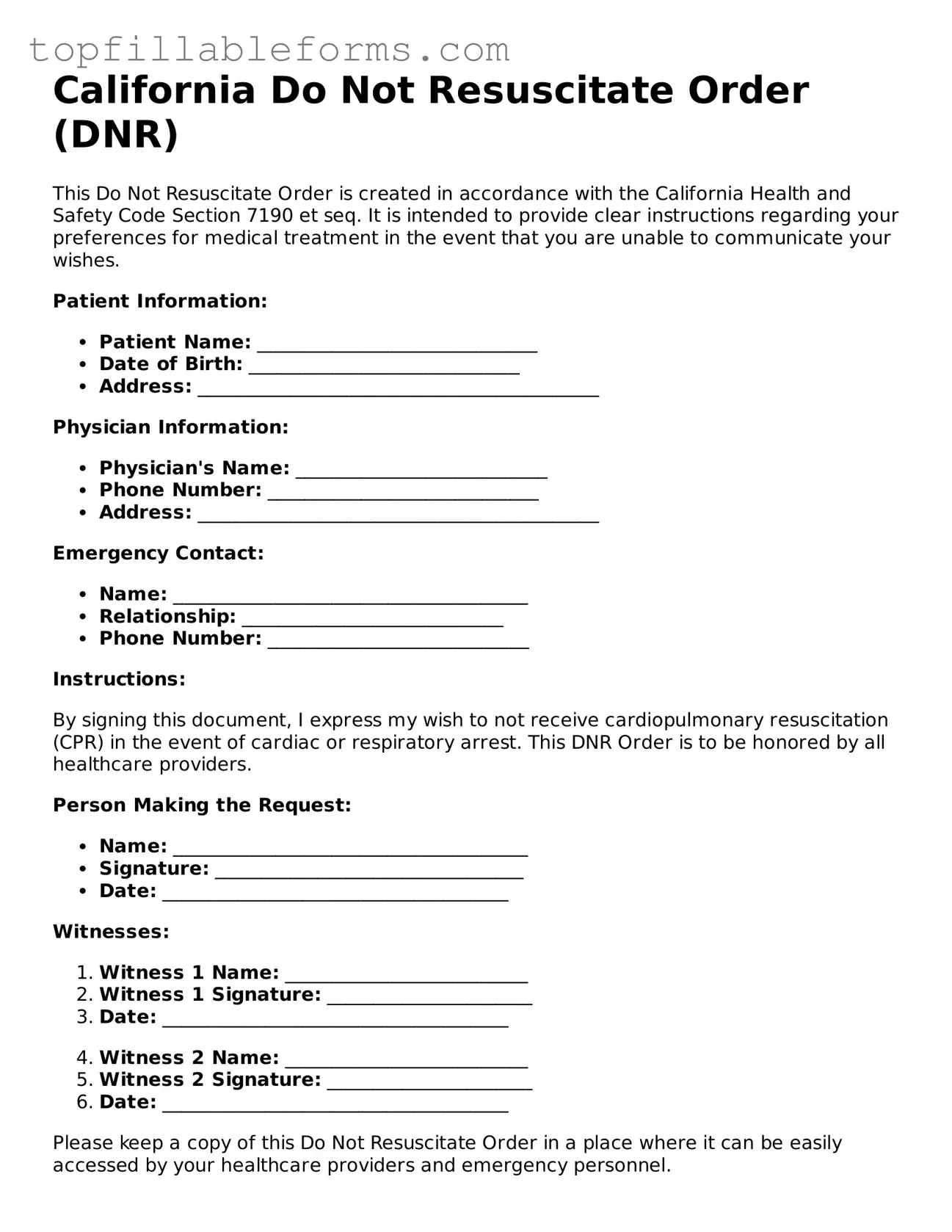California Do Not Resuscitate Order (DNR)
This Do Not Resuscitate Order is created in accordance with the California Health and Safety Code Section 7190 et seq. It is intended to provide clear instructions regarding your preferences for medical treatment in the event that you are unable to communicate your wishes.
Patient Information:
- Patient Name: ______________________________
- Date of Birth: _____________________________
- Address: ___________________________________________
Physician Information:
- Physician's Name: ___________________________
- Phone Number: _____________________________
- Address: ___________________________________________
Emergency Contact:
- Name: ______________________________________
- Relationship: ____________________________
- Phone Number: ____________________________
Instructions:
By signing this document, I express my wish to not receive cardiopulmonary resuscitation (CPR) in the event of cardiac or respiratory arrest. This DNR Order is to be honored by all healthcare providers.
Person Making the Request:
- Name: ______________________________________
- Signature: _________________________________
- Date: _____________________________________
Witnesses:
- Witness 1 Name: __________________________
- Witness 1 Signature: ______________________
- Date: _____________________________________
- Witness 2 Name: __________________________
- Witness 2 Signature: ______________________
- Date: _____________________________________
Please keep a copy of this Do Not Resuscitate Order in a place where it can be easily accessed by your healthcare providers and emergency personnel.
